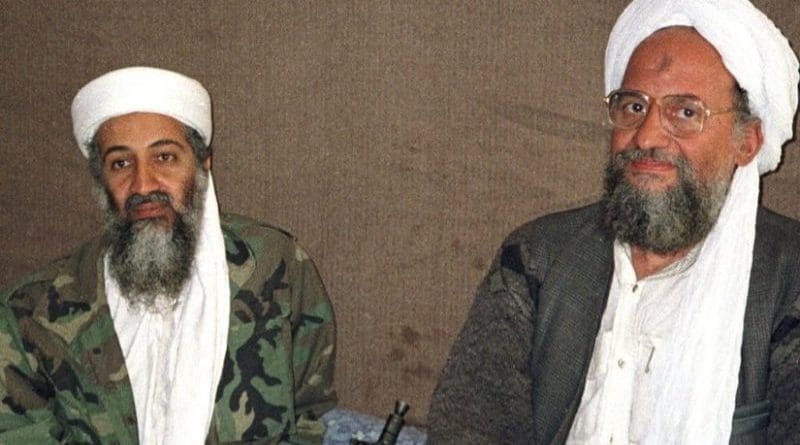The Medium Is The Body: The Death Of Osama Bin Laden – OpEd
[H]ow will we really know if bin Laden is dead? What if the man they kill is one of his rumoured body-doubles? Do we have dental records or fingerprints of bin Laden for verification? – Gawain Chartlon-Perrin, Salon.com, Dec 14, 2001.
It is far easier, says the insightful Polish scribe Stanisław Lec, to resurrect the dead than it is the living. In the case of the late (is the term redundant?) Osama bin Laden, the observation is perfectly apt. Resurrections of his being and existence have been going on for at least a decade, and the idea that Obama is ‘dead’ is the very proof of its opposite.
The cartoon comedy Family Guy ran, on February 5, 2006, a skit featuring the late member of the Saudi royal family. Bin Laden is portrayed as a giggling fool who, in proclaiming death to the infidel, mispronounces ‘Ramadan’. In another case of a terrorist turned pop figure, the rap singer Eminem mocks him in a track, pretending to be in a cave while his home boys turn up to do a dance. In actual fact, the last laugh is on the man in the cave.
This has been the ultimate mockery. For, if bin Laden has a presence in the landscape of media and video, he is surely going to be stumbling, erring – in fact blooping. One should not forget the cultural absurdities that were perpetrated in the months following those attacks. As Afghanistan was being pummelled and the Taliban made to retreat, leaflets were dropped by US forces featuring a ‘Westernised’ bin Laden, clean shaven, wily and, importantly, treacherous.
In effect, bin Laden became a pop figure, the Ander Warhol of the terror world, a modern cartoon menace. Travelling in Arab countries and those in the South East Asia would enable you to purchase T-shirts, mugs and caps featuring the leader. In the highest circles in the Pentagon, it soon became clear that his relevance as a figure, dead or alive, to use the argot of the American western, was irrelevant.
Some went even further, arguing that bin Laden’s agency in the entire engineering of the attacks was beside the point to the conflict taking place between US-led forces and their enemies. As the French writer Alain de Benoist claimed in the 2001 fall issue of Telos, ‘Whether [bin Laden] was personally involved is irrelevant.’
The ‘war on terror’ has been a perfect breeding ground for speculations, suggestions, and inferences. In time, it became clear that bin Laden was making something of a specialty dying for the audience. In 2005, Michael Ledeen of the hard hitting conservative National Review claimed, through being privy to various Iranian sources that bin Laden had left the world of the living due to kidney failure. In 2006, French sources suggested he had died of typhoid.
Then came other matters of conjecture. Were the videos he released genuine? What of the graininess of the image as he proclaimed death to America and the triumph of an all powerful global Caliphate? In time, it became clear that the Al Qaeda leader was to be deprived of any control of his own productions, of his own voice. In the words of religious studies scholar Bruce Lawrence, his voice was ‘tacitly censored, as if to hear it clearly and without cuts or interruption would be too dangerous.’ If the video was genuine, bin Laden’s existence was confirmed. If it was not, he might well be dead.
The absurdity of this is evident by the fact that, in the 1980s, a voiceprinted tape, after being shown to be ‘genuine’ suggested that Elvis Presley was, in fact, alive. The tape dictated the reality of his existence, rather than the other way around. Jonathan Sterne (Social Text, Fall 2008) picks up on this train of thought. The pop image eviscerates the body, even precluding it altogether. The medium doesn’t merely become the message but evidence of the body itself. ‘In a twisted way, Elvis and bin Laden share a certain media history as celebrities whose voices stand in for their missing bodies and whose voices were believed to be so powerful as to be able to have effects in themselves.’
Bin Laden’s body was, in fact, rumoured to be battered, harassed by the ill workings of a troublesome kidney, a situation that required dialysis. An autopsy is bound to reveal even more treats for the keen observer.
None of this is to deny the seriousness of the acts of his organisation, notably the infliction of 3000 deaths of September 11, 2001 and the continuing acts of terrorism. Celebrations are understandable, but misplaced. The personalised nature of the conflict may give a few of those rejoicing at the death of bin Laden confidence, but it would be short lived. The ‘Wild West’ theme endorsed by President George W. Bush was not particularly useful in examining either the Middle East or US foreign policy. But it is impossible to deny that the ideas in circulation that keep Al Qaeda functioning are still very much in place.
America might be able to accomplish remarkable things, as Obama reminds us in his speech announcing the capture, but it has not done a good job in securing the peace. The Islamic ideologues continue to steer the ship, however damaged or marginalised it might be. In fact, they will argue, as their counterparts in Washington began doing so at the highest levels after 2001, that a dead bin Laden may be more useful to them than a living one.

